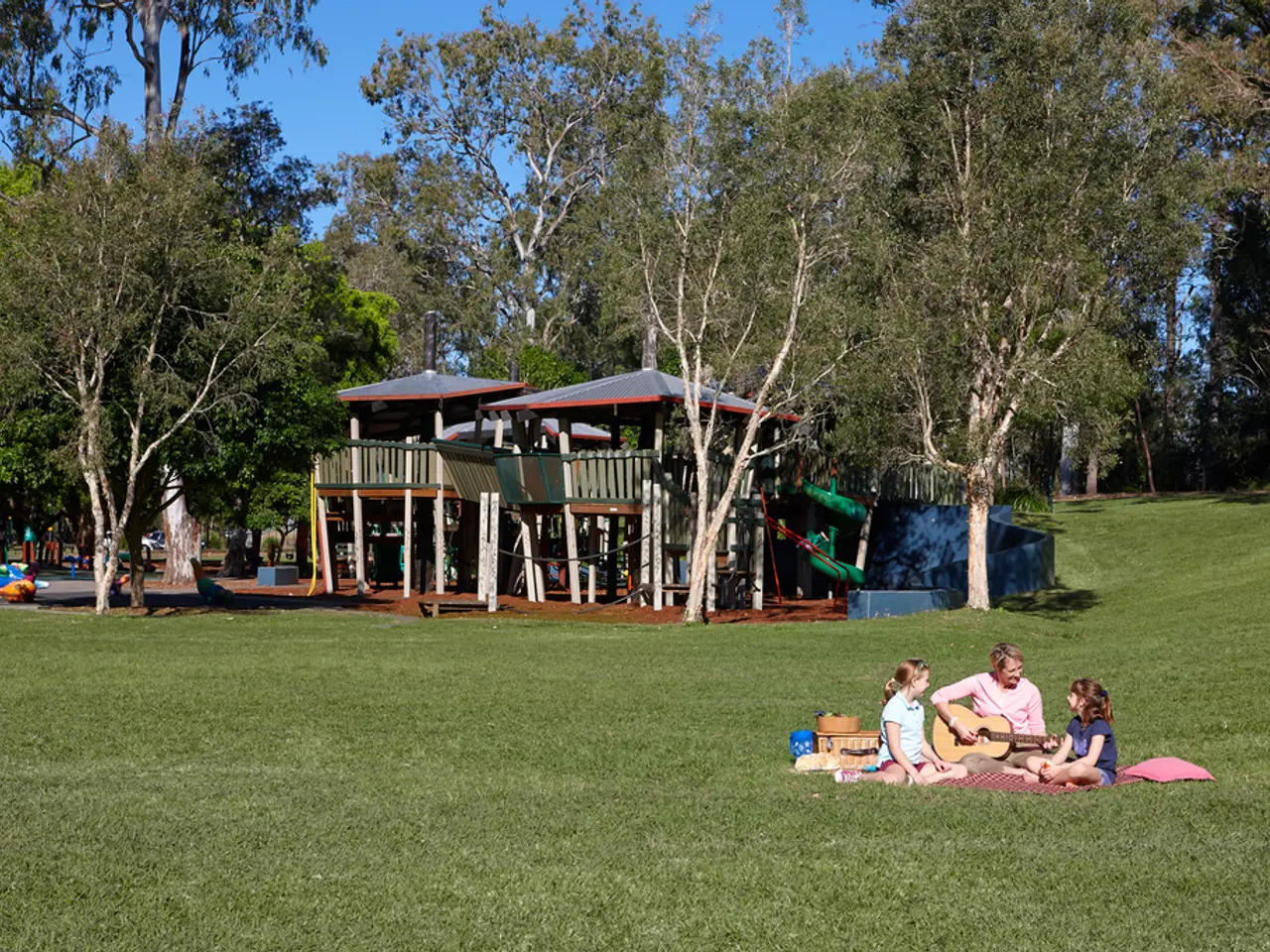Utilizing Central Park to its Full Potential: Tips and Tricks
Central Park: A Green Oasis in the Heart of New York City
Central Park, a renowned urban park in New York City, was established in 1858 and covers an area of 843 acres. The park's creation was the result of a major urban planning and landscape architecture effort led by Frederick Law Olmsted and Calvert Vaux, who won a design competition with their "Greensward Plan" in 1857-1858.
The park's design embraced a naturalistic style with winding paths, water bodies, meadows, and rugged terrain, aiming to provide a pastoral refuge within the city. Construction involved reshaping the landscape dramatically, displacing existing communities such as Seneca Village, draining swamps, blasting bedrock, and importing soil and plants.
Central Park is home to numerous attractions and amenities. The Great Lawn, located between the two museums, is a combination sports complex and concert venue. The Good Morning America Summer Concert Series hosts weekly performances by popular music acts on Rumsey Playfield between May and September. Oktoberfest, held every September in Rumsey Playfield, is a Bavarian-style celebration featuring beer, food, and entertainment.
The park also offers guided tours highlighting various aspects of the park, including children's sculptures, birding, fall foliage, art in the park, and a Hounds Hike dog walk. Central Park's six-acre Conservatory Garden in the north end features manicured French, English, and Italian beds.
Two world-class institutions, The Metropolitan Museum of Art and The American Museum of Natural History, bracket the park's midsection. The Metropolitan Museum of Art's Cantor Roof Garden Bar offers cocktails and light snacks on the roof. The Loeb Boathouse, located in the park, offers dining options, including the casual Express Cafe, the more formal Lakeside Restaurant, and an outdoor bar.
Central Park is also a cultural hub, with attractions like the Central Park Zoo, a family-friendly attraction with small but diverse exhibits, and Strawberry Fields, a memorial honoring John Lennon. The Dakota Apartments, an iconic 19th-century building that has housed celebrities such as John Lennon, Lauren Bacall, and Leonard Bernstein, are located on Central Park West.
The north end of Central Park honors Harlem's heritage with features like the Duke Ellington Memorial and the Dana Discovery Center on Harlem Meer. The Harlem Meer Snack Bar, located next to the Dana Discovery Center, is a vegetarian outlet and the only place to grab a bite or drink in the north end.
The New-York Historical Society museum and archives, located a few blocks north of the Dakota Apartments, offers insights into the city's history from its 1804 founding through to the present day. Museum Mile, a stretch of Fifth Avenue between 82nd and 110th Streets, includes the Frank Lloyd Wright-designed Guggenheim Museum, the Frick Collection, the Jewish Museum, the Museum of New York City, and El Museo del Barrio.
The park's most spectacular entrance is Grand Army Plaza at the corner of Fifth Avenue and 59th Street. Central Park receives approximately 42 million annual visitors, often compared to the Statue of Liberty and Times Square in terms of its significance to the city's image.
In addition to these attractions, Central Park also hosts events such as the Central Park Conservancy Film Festival, offering a week of free open-air movies in the park at the end of August, and the Columbus Circle Holiday Market, an outdoor bazaar held from Thanksgiving weekend to Christmas Eve.
Central Park’s evolution is marked by deliberate planning and design that balanced natural aesthetics, urban demands, and social ideals, with Olmsted and Vaux’s Greensward Plan at the core of its creation and lasting influence on urban park design.
[1] Central Park: A History, Kenneth T. Jackson, 1999 [2] Frederick Law Olmsted: Designing America, Witold Rybczynski, 1991 [3] Central Park, Central Park Conservancy, [online] Available at: https://www.centralparknyc.org/history [4] The History of Central Park, Central Park Historical Society, [online] Available at: https://www.centralparkhistoricalsociety.org/history/ [5] Central Park, National Park Service, [online] Available at: https://www.nps.gov/centralpark/index.htm
- The naturalistic design of Central Park, established in 1858, reflects a pastoral refuge within the city, offering a balance between nature and lifestyle, blending winding paths, water bodies, meadows, and rugged terrain.
- Central Park's educational value extends beyond its picturesque landscapes, as it houses world-class institutions like The Metropolitan Museum of Art and The American Museum of Natural History, providing insights into various aspects of history, art, and natural history.
- Central Park serves as an outdoor classroom, offering guided tours that delve into the park's rich biodiversity, historical architectural features, and cultural elements, fostering a deep appreciation for the environment and the city's heritage.
- The park's annual events, such as the Central Park Conservancy Film Festival and the Columbus Circle Holiday Market, highlight its role as a vibrant cultural hub, facilitating a unique experience of travel and community interaction.
- As a home-and-garden enthusiast roams through Central Park's six-acre Conservatory Garden, marveling at the well-manicured French, English, and Italian beds, they will undoubtedly appreciate the dedication to maintaining the park's exquisite natural beauty and historical integrity, reflecting the vision of Frederick Law Olmsted and Calvert Vaux.




